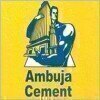
Wonder Cement
Proud winner of ABECA 2025 - AmbitionBox Employee Choice Awards
Filter interviews by
Wonder Cement Interview Questions and Answers
45 Interview questions
Discussing current and expected CTC helps gauge salary expectations and alignment with industry standards.
Current CTC: Clearly state your current Cost to Company, including base salary, bonuses, and benefits. For example, 'My current CTC is $80,000.'
Expected CTC: Provide a reasonable range based on market research and your experience. For instance, 'I am looking for a CTC in the range of $90,000 to $100,000.'
Marke...
Gypsum is added to cement to control setting time and improve workability, enhancing the overall performance of concrete.
Regulates setting time: Gypsum slows down the hydration of cement, preventing it from setting too quickly.
Improves workability: It enhances the flow and handling characteristics of the cement mix.
Prevents flash setting: Gypsum helps avoid rapid hardening, allowing for better placement and finish...
Clinker is primarily composed of calcium silicates, with a general formula of 2CaO·SiO2, among other compounds.
Clinker mainly consists of four key minerals: alite (C3S), belite (C2S), tricalcium aluminate (C3A), and tetracalcium aluminoferrite (C4AF).
The chemical formula can be represented as 2CaO·SiO2 for alite, which is the most abundant phase.
Clinker is produced by heating limestone and clay in a kiln at high t...
Cement types vary based on composition and use, influencing strength, setting time, and durability in construction.
Ordinary Portland Cement (OPC): Commonly used for general construction.
Portland Pozzolana Cement (PPC): Contains pozzolanic materials, enhancing durability.
Rapid Hardening Cement: Gains strength quickly, ideal for fast-track projects.
Sulphate Resisting Cement: Designed for environments with high sulph...
Designing a control system for a kiln involves implementing sensors, actuators, and a feedback loop to regulate temperature and other parameters.
Identify the key parameters to be controlled, such as temperature, airflow, and pressure.
Select appropriate sensors to measure these parameters, such as thermocouples, pressure transducers, and flow meters.
Choose actuators to adjust the parameters, such as heating element...
Tools required for motor alignment include laser alignment tools, dial indicators, feeler gauges, and alignment bars.
Laser alignment tools are used to ensure precise alignment of the motor shafts.
Dial indicators are used to measure the runout of the motor shafts.
Feeler gauges are used to check the clearance between the motor and the mounting base.
Alignment bars are used to ensure parallel alignment of the motor sh...
Bearing clearance can be measured using a feeler gauge tool.
Use a feeler gauge tool to measure the gap between the bearing and the shaft.
Insert the feeler gauge between the bearing and the shaft to determine the clearance.
Ensure the bearing is properly seated and the shaft is not moving during measurement.
Master level is used in various aspects of millwright work, such as precision measurements, equipment installation, and troubleshooting.
Master level is used for precision measurements to ensure equipment is properly aligned and leveled.
Master level is used during equipment installation to ensure everything is set up correctly.
Master level is used for troubleshooting to identify any issues with alignment or levelin...
The accuracy of a micrometer typically ranges from 0.001mm to 0.0001mm.
Micrometers are commonly accurate to within 0.001mm (1 micrometer) or even 0.0001mm (0.1 micrometer).
The accuracy can vary depending on the quality and calibration of the specific micrometer.
For precision measurements, a micrometer with higher accuracy is preferred.
Motor alignment is the process of ensuring that the motor shaft is properly aligned with the driven equipment shaft to prevent issues like vibration and premature wear.
Motor alignment involves using precision tools like dial indicators and laser alignment systems to measure and adjust the position of the motor shaft.
Proper alignment helps in reducing energy consumption, increasing equipment lifespan, and improving...
Wonder Cement Interview Experiences
54 interviews found
I applied via Naukri.com and was interviewed in Sep 2021. There were 4 interview rounds.
Interview Questionnaire
6 Questions
- Q1. All types of HT protection Relay
- Ans.
HT protection relays are devices used to protect high voltage electrical systems from faults and abnormalities.
HT protection relays are used in high voltage electrical systems to detect faults and abnormalities.
They are designed to quickly and accurately identify and isolate faults to prevent damage to equipment and ensure the safety of personnel.
Different types of HT protection relays include overcurrent relays, diffe...
- Q2. Power consumption of your plant
- Ans.
The power consumption of our plant is closely monitored and optimized to ensure efficient operation.
We track power consumption on a regular basis to identify any areas of improvement.
We have implemented energy-saving measures such as using energy-efficient equipment and optimizing processes.
We conduct energy audits to assess the power consumption patterns and identify opportunities for reduction.
We have successfully re...
- Q3. How many HT motors in your plant
- Ans.
I don't have the available data.
- Q4. Commissioning and installation of HT motors
- Ans.
Commissioning and installation of HT motors involves several steps and precautions.
Ensure proper alignment and coupling of motor and load
Check electrical connections and insulation resistance
Verify correct voltage and frequency settings
Perform motor testing and calibration
Follow safety protocols and use appropriate PPE
Document all installation and commissioning activities
- Q5. All types of HT breaker's and it's protection
- Ans.
HT breakers are high voltage circuit breakers used for protection in electrical systems.
HT breakers are designed to handle high voltage levels, typically above 1000 volts.
They are used to protect electrical equipment and systems from overloads, short circuits, and faults.
Different types of HT breakers include air circuit breakers, oil circuit breakers, vacuum circuit breakers, and SF6 circuit breakers.
Each type of HT b...
- Q6. Transformer protection
Interview Preparation Tips
I appeared for an interview in Jan 2025.
Check knowledge of the candidate
(1 Question)
- Q1. What is your name and what are your qualifications?
- Ans.
My name is John Smith and I have a Bachelor's degree in Business Administration.
Name: John Smith
Qualifications: Bachelor's degree in Business Administration
(1 Question)
- Q1. Qualification and technical knowledge
(1 Question)
- Q1. Logistics activities
(5 Questions)
- Q1. What are the tools required for a motor alignment?
- Ans.
Tools required for motor alignment include laser alignment tools, dial indicators, feeler gauges, and alignment bars.
Laser alignment tools are used to ensure precise alignment of the motor shafts.
Dial indicators are used to measure the runout of the motor shafts.
Feeler gauges are used to check the clearance between the motor and the mounting base.
Alignment bars are used to ensure parallel alignment of the motor shafts.
...
- Q2. How can be measured bearing clearance, specify the tool name?
- Ans.
Bearing clearance can be measured using a feeler gauge tool.
Use a feeler gauge tool to measure the gap between the bearing and the shaft.
Insert the feeler gauge between the bearing and the shaft to determine the clearance.
Ensure the bearing is properly seated and the shaft is not moving during measurement.
- Q3. Where are we using master level?
- Ans.
Master level is used in various aspects of millwright work, such as precision measurements, equipment installation, and troubleshooting.
Master level is used for precision measurements to ensure equipment is properly aligned and leveled.
Master level is used during equipment installation to ensure everything is set up correctly.
Master level is used for troubleshooting to identify any issues with alignment or leveling tha...
- Q4. What is the accuracy of micrometre?
- Ans.
The accuracy of a micrometer typically ranges from 0.001mm to 0.0001mm.
Micrometers are commonly accurate to within 0.001mm (1 micrometer) or even 0.0001mm (0.1 micrometer).
The accuracy can vary depending on the quality and calibration of the specific micrometer.
For precision measurements, a micrometer with higher accuracy is preferred.
- Q5. What is process of motor alignment?
- Ans.
Motor alignment is the process of ensuring that the motor shaft is properly aligned with the driven equipment shaft to prevent issues like vibration and premature wear.
Motor alignment involves using precision tools like dial indicators and laser alignment systems to measure and adjust the position of the motor shaft.
Proper alignment helps in reducing energy consumption, increasing equipment lifespan, and improving over...
- Q1. Sales releted to improve sale. Of company
- Q2. Market Plan to year improve sale to year to years
- Q3. How to do work
(5 Questions)
- Q1. Wonder cement kaisa set hota hai
- Q2. Wonder cement ki kya quality hai
- Q3. Wonder cement kitne din mein set ho jata hai
- Q4. Wonder cement mein retailerko kya milta hai
- Q5. Wonder cement ki secretary kahan per hai
Interview Preparation Tips
I appeared for an interview in Mar 2025, where I was asked the following questions.
- Q1. Tell me about why gypsum is add in cement
- Ans.
Gypsum is added to cement to control setting time and improve workability, enhancing the overall performance of concrete.
Regulates setting time: Gypsum slows down the hydration of cement, preventing it from setting too quickly.
Improves workability: It enhances the flow and handling characteristics of the cement mix.
Prevents flash setting: Gypsum helps avoid rapid hardening, allowing for better placement and finishing.
E...
- Q2. What is the clinker’s chemical formula
- Ans.
Clinker is primarily composed of calcium silicates, with a general formula of 2CaO·SiO2, among other compounds.
Clinker mainly consists of four key minerals: alite (C3S), belite (C2S), tricalcium aluminate (C3A), and tetracalcium aluminoferrite (C4AF).
The chemical formula can be represented as 2CaO·SiO2 for alite, which is the most abundant phase.
Clinker is produced by heating limestone and clay in a kiln at high temper...
- Q3. What are the type of cement
- Ans.
Cement types vary based on composition and use, influencing strength, setting time, and durability in construction.
Ordinary Portland Cement (OPC): Commonly used for general construction.
Portland Pozzolana Cement (PPC): Contains pozzolanic materials, enhancing durability.
Rapid Hardening Cement: Gains strength quickly, ideal for fast-track projects.
Sulphate Resisting Cement: Designed for environments with high sulphate e...
(2 Questions)
- Q1. Difference between switch and hub
- Ans.
Switch operates at the data link layer and forwards data based on MAC addresses, while hub operates at the physical layer and broadcasts data to all connected devices.
Switch makes decisions based on MAC addresses, improving network efficiency.
Hub broadcasts data to all connected devices, leading to potential network congestion.
Switches have multiple ports for connecting devices individually, while hubs typically have f...
- Q2. Difference between c and c++
- Ans.
C is a procedural programming language while C++ is an object-oriented programming language.
C is a procedural programming language, focusing on functions and procedures.
C++ is an object-oriented programming language, allowing for classes, objects, and inheritance.
C++ is an extension of C with additional features like classes, templates, and exception handling.
Interview Preparation Tips
Skills evaluated in this interview
(2 Questions)
- Q1. Difference between hub and switch
- Ans.
Hub is a simple networking device that broadcasts data to all connected devices, while a switch forwards data only to the intended recipient.
Hub operates at the physical layer of the OSI model, while switch operates at the data link layer.
Hub is less secure as it broadcasts data to all devices, while switch is more secure as it forwards data only to the intended recipient.
Hub is slower as it causes collisions in networ...
- Q2. Difference between c and C++
- Ans.
C is a procedural programming language while C++ is an object-oriented programming language.
C is a procedural programming language, focusing on functions and procedures.
C++ is an object-oriented programming language, allowing for classes, objects, and inheritance.
C does not support classes and objects, while C++ does.
C++ has features like polymorphism, encapsulation, and inheritance which are not present in C.
C++ is co...
Interview Preparation Tips
Skills evaluated in this interview
I applied via Approached by Company and was interviewed in Mar 2024. There were 2 interview rounds.
(2 Questions)
- Q1. Negotiations for salary
- Q2. Negotiations for desired position
(2 Questions)
- Q1. Transformers, switchyard, testing
- Q2. Erection installation
I applied via Naukri.com and was interviewed in Nov 2023. There was 1 interview round.
(6 Questions)
- Q1. Any questions of processing of cement
- Q2. Any tecnical questions
- Q3. Any discussion about this plant
- Q4. Any questions about sefty
- Q5. Any questions about me and office employ
- Q6. Some questions about why I'm join cement plant
Interview Preparation Tips
I applied via Company Website and was interviewed in Sep 2024. There was 1 interview round.
About All company products discussed
Interview Preparation Tips
Top trending discussions






Wonder Cement Interview FAQs
The duration of Wonder Cement interview process can vary, but typically it takes about less than 2 weeks to complete.
Tell us how to improve this page.
Wonder Cement Interviews By Designations
- Wonder Cement Mechanical Engineer Interview Questions
- Wonder Cement Associate Manager Interview Questions
- Wonder Cement Senior Engineer Interview Questions
- Wonder Cement Sales Officer Interview Questions
- Wonder Cement Project Engineer Interview Questions
- Wonder Cement Packing Plant Supervisor Interview Questions
- Wonder Cement Officer Interview Questions
- Wonder Cement Area Sales Manager Interview Questions
- Show more
Interview Questions for Popular Designations
Overall Interview Experience Rating
based on 83 interview experiences
Difficulty level
Duration
Interview Questions from Similar Companies
Wonder Cement Reviews and Ratings
based on 794 reviews
Rating in categories
|
Associate Manager
210
salaries
| ₹7.8 L/yr - ₹18.6 L/yr |
|
Senior Engineer
142
salaries
| ₹4.9 L/yr - ₹13 L/yr |
|
Assistant Manager
113
salaries
| ₹6.7 L/yr - ₹15.4 L/yr |
|
Mechanical Engineer
111
salaries
| ₹3 L/yr - ₹9.4 L/yr |
|
Engineer
98
salaries
| ₹3.2 L/yr - ₹7.1 L/yr |

JK Cement

ACC

Ambuja Cements

Nuvoco Vistas
- Home >
- Interviews >
- Wonder Cement Interview Questions












